Month: October 2018
PHOTOS: Off-Off Broadway at the Caffe Cino
October 25, 2018
On October 23, 2018, Caffe Cino historian and veteran Magie Dominic and Project manager Amanda Davis joined with the Greenwich Village Society for Historic Preservation (GVSHP) to host “Caffe Cino: Off-Off Broadway and On the National Register,” at the historic Judson Memorial Church. Together, they shared the history and magic of the Caffe Cino, a groundbreaking pre-Stonewall café theater.
Caffe Cino, located at 31 Cornelia Street from 1958 to 1968, was the creation of Joe Cino, an openly gay Italian-American producer who is credited with starting the “Off-Off-Broadway” theater movement. Caffe Cino was the first important venue to regularly stage Off-Off-Broadway productions, was critical in the development of gay theater, and served as a place of support for gay playwrights during a time when depicting LGBT experiences on stage was illegal.
Project manager Amanda Davis is the author of the National Register nomination for the Caffe Cino.
Thank you to our cohosts, GVSHP, to Magie Dominic and to all our guests, especially Obie and Tony Award-winning director Marshall Mason, a veteran of the Caffe cino.
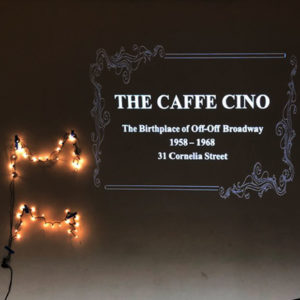
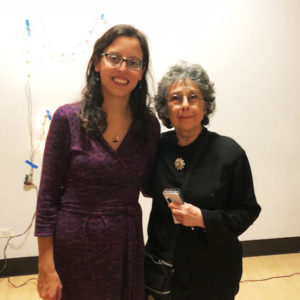
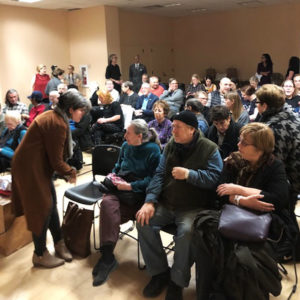
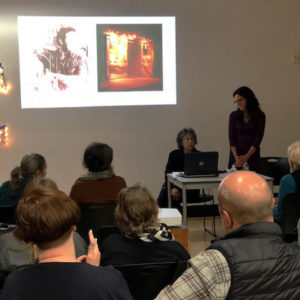
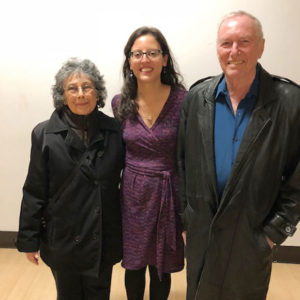
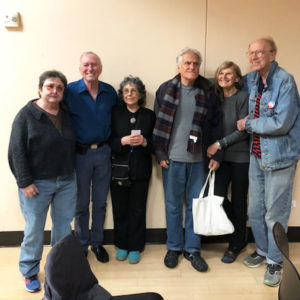

Celebrate LGBT History Month With a Special Trolley Tour of Green-Wood Cemetery
October 11, 2018
By: Susan De Vries


October is LGBT History Month and if you need a bit of education on some of the leading figures of the 19th and 20th century then a special tour at Green-Wood Cemetery will provide some answers.
This weekend you can hop on a trolley and take a ride while learning more about the LGBT figures who make up some of the “permanent residents” of the historic cemetery. Spots along the tour will include the grave sites of Paul Jabara, co-writer of “It’s Raining Men,” and Emma Stebbins, sculptor of the Bethesda Fountain in Central Park. The tour will be lead by Andrew Dolkart and Ken Lustbader, Co-Directors of the NYC LGBT Historic Sites Project.

The NYC LGBT Historic Sites Project was begun in 2015. It uses research gathered over 25 years by the organization’s founders to boost public awareness of the significance of the sites as well as the LGBT community’s role in the history of the U.S. In addition to documenting and mapping historic locations, the group is working to nominate sites to the National Register of Historic Places. The National Park Service, which oversees the National Register of Historic Places, announced an LBGTQ Heritage Theme Study in 2014, part of an effort to expand the diversity of American history represented on the Register.
The “Gay Green-Wood” tour takes place on Sunday, October 14 from 3:30 to 5:30 p.m. Tickets are $25, and $20 for members Green-Wood and Brooklyn Historical Society. For more information and to purchase tickets, click here.
Click here to read the full article at Brownstoner
Celebrate LGBTQ History Month with this interactive map of historic N.Y.C. sites
20181012
By: Gabrielle Golenda

This month is LGBTQ History Month and to honor it The Municipal Art Society (MAS) of New York featured a panel about historic sites associated with the lesbian, gay, bisexual, and transgender rights movement at this week’s MAS Summit in New York City. Every year, the conference explores how present-day issues can be informed and challenged by historical advocacy.
On Tuesday the ninth annual program featured a lecture led by the co-director of the NYC LGBT Historic Sites Project, Ken Lustbader, who, in his own words, is trying to put LGBT history on the map by “looking at it through a rainbow lens.”

Next year marks the 50th anniversary of the 1969 Stonewall Riots, a police raid at the Stonewall Inn gay bar in New York’s Greenwich Village. Lustbader recalled that the riot wasn’t the first at the Christopher Street institution, but one that is especially remembered for the days-long protest where patrons were inspired to fight back, forever marking the N.Y.C. neighborhood as the unofficial cradle of the LGBT rights movement.

Stonewall Inn is just one of the places the NYC LGBT Historic Sites Project documents in its interactive map of historic and cultural sites associated with the community in all five boroughs. From the Angel of the Waters statue atop the Bethesda Fountain—an 1860s masterpiece by lesbian sculptor Emma Stebbins and the earliest public artwork by a woman in New York City—to Carnegie Hall—the venue famous for hosting countless performances and works by LGBT artists—the list of historic sites reaches way beyond bars and clubs.
Continuously being added to, the network of hundreds of locations illustrates the richness of the movement’s history and its influence in the United States. Covering sites dating from the city’s founding in the 17th century to the year 2000, it currently lists 5 locations in Staten Island, 12 in Queens, 123 in Manhattan, 8 in Brooklyn, and 4 in The Bronx. The 150 pins presently live on the map can be filtered by cultural significance, neighborhood, era, and LGBT category.

The organization also offers themed tours that rotate throughout the year, including ones on Jewish New York, Transgender History, and The AIDS Crisis.
Many of the movement’s historic sites were unappreciated and a vast majority remain completely unknown. Landmarking LGBT sites comes with its own set of unique challenges. When a potential landmark cannot be evaluated on architectural grounds alone, a site’s social history can be difficult to establish because of a lack of proper documentation of LGBT sites. According to Lustbader, there’s historically been almost no record of various sites keeping because of stigma and fear of exposure. There’s another caveat: proving identity and gender can be difficult for LGBT people.

Today, there are now 17 LGBT-related sites of the more than 93,000 listed on the National Register of Historic Places. Lustbader and fellow project directors Andrew S. Dolkart and Jay Shockley confronted these challenges with 25 years of LGBT-specific research conducted by historic preservation professionals and numerous outreach events and crowdsourcing opportunities to develop a step-by-step guide to evaluate state and national LGBT register listings. The guide and all of their research can be accessed in the Historic Context Statement for LGBT History in New York.
Discover hundreds of places that represent NYC’s LGBT past on nyclgbtsites.org. Each site contains descriptive historical accounts, contemporary and archival photographs, related ephemera, and multimedia presentations. Happy cruising!
Click here to read the full article at The Architect’s Newspaper